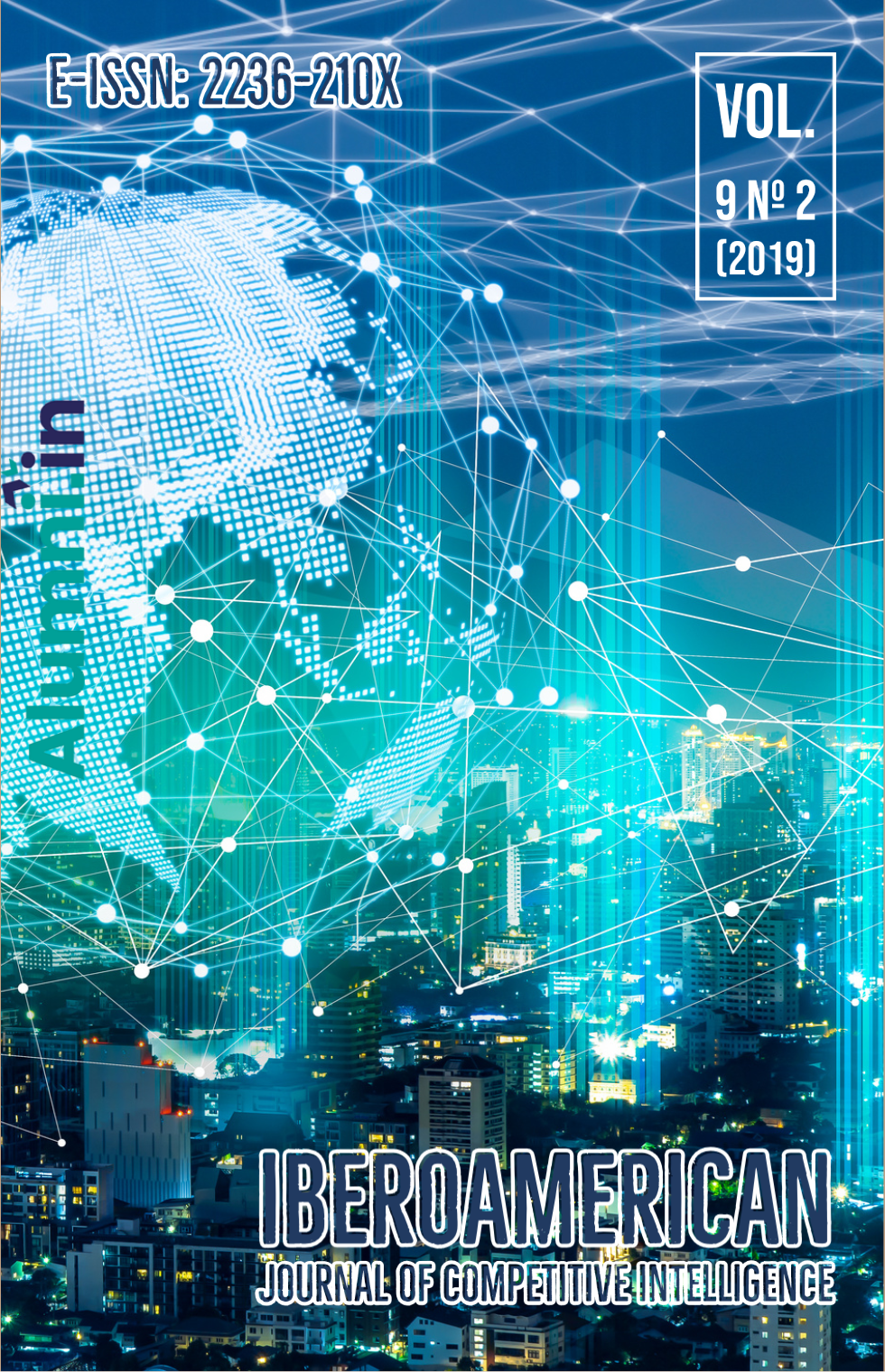Conectando Startups Abertas às Áreas de P&D das Grandes Empresas
DOI:
https://doi.org/10.24883/IberoamericanIC.v9i2.320Keywords:
inovação aberta, startups, empreendedoresAbstract
Essa pesquisa tem por objetivo mapear e estudar as formas de interação organizacional das grandes empresas, as quais se alteram com a abertura do conhecimento para além de suas fronteiras, com a chamada inovação aberta. Pesquisou-se os agentes das startups - os empreendedores, e como essa dinâmica de relação com o P&D das grandes empresas vêm alterando a dinâmica de suas relações. Sobre as grandes empresas, verificou-se quais são as estratégias utilizadas nas mesmas para gerar inovação e, por fim, esse estudo teve aplicação empírica, no Desafio Brasil especificamente no programa 100 Open Startups, principal concurso de inovação aberta no país que viabiliza a conexão, por meio de uma plataforma de comunicação, entre startups de sucesso com áreas de P&D das grandes empresas, como resultado, se têm a geração de inovação aberta entre startups e grandes empresas. A presente pesquisa contribuiu para a construção do conhecimento sobre inovação aberta no Brasil.
Downloads
References
CHESBROUGH, H. (2012). Inovação Aberta: Como criar e lucrar com a tecnologia. Porto Alegre: Bookman.
CHESBROUGH, H. (2000). Designing Corporate Ventures in the Shadow of Private Venture Capital. California Management Review, v. 42, p. 31-49. Recuperado de http://www.cmr.berkeley.edu. DOI: https://doi.org/10.2307/41166041
DESAFIO BRASIL. (2015). Movimento Open Startups. São Paulo. Recuperado de <http://www.openstartups.org.br/db/.
GIL, A.C. (2002). Como elaborar projetos de pesquisa. São Paulo: Editora Atlas.
GIL, A.C. (2009). Estudo de Caso. São Paulo: Editora Atlas.
RIES, E. (2011). The lean startup: how today's entrepreneurs use continuous innovation to create radically successful businesses. New York: Crown Business.
RONDANI, B, COLONNA, C. (2014). Open Startups: connecting startups to corporate R&D. São Paulo: Wenovate.
RONDANI, B., ANDREASSI, T., & BERNARDES, R.C. (2013). Microfoundations for Open Innovation: is effectuation a valid approach for open innovation managers. Revista Gestão e Conexões, v. 1, p. 94-115. Recuperado de <http://www.periodicos.ufs.br. DOI: https://doi.org/10.13071/regec.2317-5087.2013.2.1.4968.94-115.
SCHUMPETER, J. A. (1997). Teoria do desenvolvimento Econômico: Uma investigação sobre lucros, capital, crédito, juro e o ciclo econômico. São Paulo: Editora Nova Cultural.
Downloads
Published
How to Cite
Issue
Section
License
Authors who publish with this journal agree to the following terms:
1. Authors who publish in this journal agree to the following terms: the author(s) authorize(s) the publication of the text in the journal;
2. The author(s) ensure(s) that the contribution is original and unpublished and that it is not in the process of evaluation by another journal;
3. The journal is not responsible for the views, ideas and concepts presented in articles, and these are the sole responsibility of the author(s);
4. The publishers reserve the right to make textual adjustments and adapt texts to meet with publication standards.
5. Authors retain copyright and grant the journal the right to first publication, with the work simultaneously licensed under the Creative Commons Atribuição NãoComercial 4.0 internacional, which allows the work to be shared with recognized authorship and initial publication in this journal.
6. Authors are allowed to assume additional contracts separately, for non-exclusive distribution of the version of the work published in this journal (e.g. publish in institutional repository or as a book chapter), with recognition of authorship and initial publication in this journal.
7. Authors are allowed and are encouraged to publish and distribute their work online (e.g. in institutional repositories or on a personal web page) at any point before or during the editorial process, as this can generate positive effects, as well as increase the impact and citations of the published work (see the effect of Free Access) at http://opcit.eprints.org/oacitation-biblio.html
• 8. Authors are able to use ORCID is a system of identification for authors. An ORCID identifier is unique to an individual and acts as a persistent digital identifier to ensure that authors (particularly those with relatively common names) can be distinguished and their work properly attributed.











